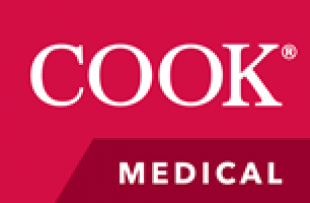Cook Medical: on the road to recovery

Background
Cook Medical develops and provides the medical community with innovative medical devices and therapies needed to produce the best possible outcomes for patients.
The organisation takes safety and injury management seriously, and manages manual tasks, stress, health and wellbeing to keep their workers safe while reducing their WorkCover Queensland premium.
WorkCover Queensland Customer Advisor (South) Kerrie Archer says Cook Medical is always looking for ways to improve the safety of their staff, and by doing so, have been able to reduce their workers' compensation insurance premium.
“They're committed to providing a safe workplace and a culture that encourages people to talk about injury prevention and management,” Kerrie said.
Cook Medical Workplace Health and Safety Advisor Martin Forster, says the organisation is fully committed to the principles and process of workplace rehabilitation and return to work.
“We recognise that a safe return to full duties at the earliest time after injury is of maximum benefit to both the injured employee and the employer,” Martin said.
“In the 2008-9 periods, their average first return to work days was 20.90. In 2011-12 it was down to 12.73 and year to date, it's just two. The industry average first return to work is 5.80 days.
Injury management strategies
Some of the strategies they've implemented to achieve positive results include:
- better training
- making injury prevention and management a priority
- ensuring management and supervisors understand and support return to work
- encouraging everyone within the organisation to identify and minimise risks
- employing five rehabilitation and return to work coordinators who know the business.
“We utilise the support of colleagues and supervisors to better manage workloads and stress while developing skills around resilience and coping. We work with employees to change their coping behaviours through identifying previous coping strategies and addressing their effectiveness.
“We also encourage workers to discuss injury management to ensure it is meaningful; help staff understand the basic anatomy and physiology and how it relates to their work; provide information on risk factors associated with manual handling in their work; and help them approach manual handling in the safest way possible,” Martin said.
“Employees are encouraged to report injuries as soon as they occur, discuss issues, concerns or questions openly and in a safe environment with the knowledge that they will be listened to,” Martin added.
Management and supervisors' role in return to work
Supervisors and managers are trained on the importance of recovering at work, and the organisation is pro-active with their stay at work approach as they strive to find suitable duties wherever possible.
“Cook Medical understands that supervisors and managers have the capacity to influence and determine workplace culture. This in turn impacts on how successful the workers return to work will be.
“We provided initial training to supervisors and managers to help them understand their priorities and Cook Medical's goals for RRTW,” Martin added.
“Rehabilitation priorities are passed onto supervisors and managers and line management accountability is given to those involved. This enables them to promote a supportive work environment and allow early and appropriate intervention, at the time of injury, at home and on return to work.
“Cook Medical acknowledges that returning injured workers to their pre-injury role is a team effort, headed by the worker, through to the doctors and rehabilitation coordinators, onto the worker's colleagues and supervisors and other health care providers such as occupational therapists or physiotherapists.
“Everyone has a specific and important role to play in rehabilitation and return to work,” Martin said.
Outcome
As a result, Cook Medical staff sustains fewer injuries than the industry average and the average paid days is also less than the industry's.
“Their final return to work is 100 per cent and the average monthly payments has decreased to $443 from $2 738 since the series began in 2008-9,” Kerrie said.
Cook Medical has managed to reduce their premium rate from double the premium industry rate (Medical and Surgical Equipment manufacturing industry) in 2010/2011 down to the industry rate in 2012/2013.
“This is a significant improvement and a credit to Cook Medical, and proof the work they've been doing has worked,” Kerrie concluded.
Cook Medical participated in the WorkCover and Workplace Health and Safety Injury Prevention and Management (IPaM) program. Martin said the program allowed Cook Medical the time and room to manoeuvre to enable it to prioritise its RRTW activities and plans.